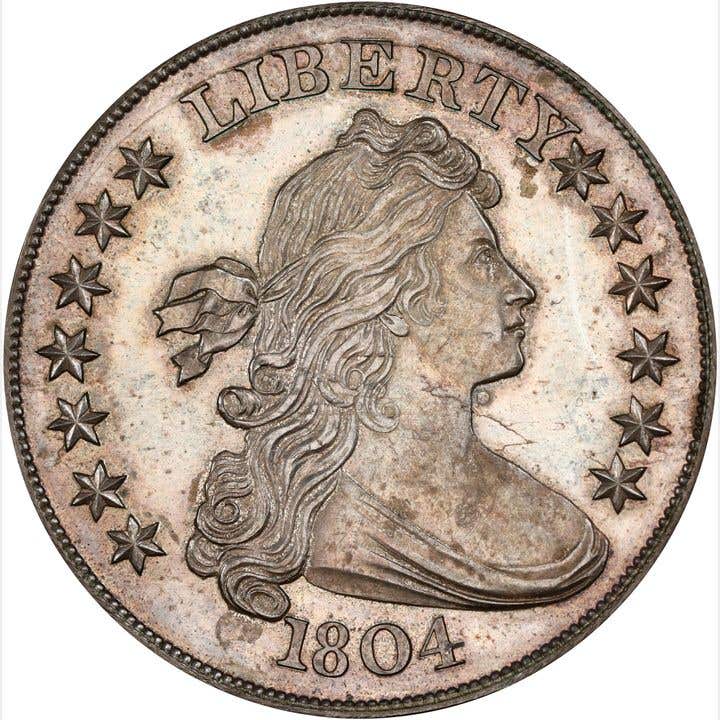Before the Mint Got There: Homegrown Gold Coins
Serious collectors of gold coinage, as well as those of us who really enjoy the history of our coins, know that for a brief time, the United States Mint operated…
Serious collectors of gold coinage, as well as those of us who really enjoy the history of our coins, know that for a brief time, the United States Mint operated branch facilities in Charlotte, N.C., and Dahlonega, Ga. For a much longer time a branch Mint has operated in the City by the Bay, San Francisco. The ‘C’ and ‘D’ mint marks from the two southern branches, as well as the ‘S’ from the West Coast, are all the result of gold rushes in the nineteenth century – although the California gold rush of 1849 is by far the one remembered by the most people, even giving its name to a football team! Curiously though, the siren call of gold, and the distances between the gold fields and the Mint in Philadelphia meant that there were some energetic individuals who went into the business of making gold coins considerably before Congress got around to authorizing any branch Mint. What are generally called private gold coins can become a fascinating study for any of us today.
Templeton Reid
The discovery of gold in Georgia brought the eager, the ambitious, and the adventurous to the Peach State, and invariably some made their fortunes there. One person who thought that wealth could be made not by digging in the ground, but by turning newfound gold into coins was Mr. Templeton Reid, a machinist and silversmith. He had the machinery to produce coins and appears to have done so in 1830. Alas, Mr. Reid’s assays were not always accurate, which meant his coins were actually worth a bit less than the $2.50, or $5, or “TEN DOLLARS” which were stamped on them. He closed shop in less than a year, and it appears that many of his coins may have been re-melted, as only a handful of any of the three denominations survive today.
The Bechtler’s
A bit further north one Mr. Christian Bechtler set up shop in Rutherford County, North Carolina. Both a watch maker and a goldsmith, Mr. Bechtler was another person who recognized that one could make money by making money. He and his sons set up their own Mint and began producing not only $2.50 and $5 gold pieces, but the first $1 gold pieces our nation had ever seen.
Based on the number of varieties that have survived, the Bechtler coins were used widely and appear to have been rather widely accepted. When it comes to design work, Mr. Bechtler, his son, and his nephew, with whom he worked, kept it simple. The coins all state naught but their value, the name, and the purity of the gold. No fancy design work such as a figure of Lady Liberty or some version of an eagle. This may seem a bit boring or utilitarian to us today, but it did serve as a form of advertising in its own time, with folks knowing that these were decent coins in which they could have some faith.
The ‘C’ and ‘D’ Mints
Congress did get into gear and authorize branch Mints in Charlotte, and in Dahlonega, and both facilities did pound out gold quarter eagles and half eagles. The year 1838 saw half eagles come out of each, and quarter eagles come out of Charlotte. Dahlonega anted up quarter eagles in 1839, and even added some $3 gold pieces as late as 1854. All are expensive today, but all represent a great slice of our history, and are connected with the private gold issues that came before them.
Moffat & Company
It was the California gold rush of 1849 that would serve as a real catalyst for the production of private gold coins, and that would do a great deal to increase the settlement of California and the American West. After the discovery of gold at Sutter’s Mill, a flood of people moved west by land or by the long ship route around South America to see what newfound riches could be dug from the ground.
Among the many companies that had the equipment to both assay gold for its purity and form it into some type of ingot or coin, the firm of Moffat and Company stands very tall. They began by issuing rectangular ingots that had values pegged to their weights. The lowest known valued stamped on one is $9.43 and the highest for which there is any record was $264 – although the latter does not appear to have survived.
In a real step up, Moffat & Company was able to start producing a true coin, or at least a true private coin, dated 1849. Taking only a passing glance at one, we might be excused for thinking that any of these were real, United States $5 half eagles or $10 eagles. The Liberty image dominating the obverse is the same, as is the eagle on the reverse. But the coronet of the obverse figure doesn’t say “Liberty.” Rather, it advertises the company name. In similar manner, the reverse proclaims it to be California gold. Believe it or not, these pieces do occasionally come up for sale through one auction house or another.
Moffat would eventually sell off all their equipment to the federal government which indeed put it to good use. They used it to open a facility known as the San Francisco Mint.
The U.S. Assay Office
The biggest gold coins ever issued by a private firm were the U.S. Assayer Augustus Humbert’s $50 pieces with their distinct, octagonal shape. Like several of those before him, Humbert was skilled in another trade – watchmaking in this instance – but was proficient in assaying precious metal, and in coining it. As might be expected, these $50 gold pieces, sometimes called quintuple eagles, sometimes just called slugs, represented a great deal of money for their time.
It’s worth taking a moment to reflect on this just-mentioned value, and on a $50 gold piece. In the late 1830’s, when Ohio, Indiana, and Michigan were the Northwest Territory, a person could buy a one-square-mile farm for the whopping price of $1 – which some farmers complained was too much. Only ten years later, there was enough gold in the West that Humbert saw fit to turn it into $50 coins or slugs. A lot had happened in a decade.
Baldwin & Company
Another firm that got into the gold coin business rather quickly was that of Baldwin & Company. In what is becoming a familiar type of comment, Mr. George Baldwin and his partner Thomas Holman were jewelers in San Francisco before they got into the business of gold coins They chose to buy the equipment of assayer F.D. Kohler, who had been producing gold ingots. The Baldwin endeavor produced $5, as well as $10 gold pieces, and came out with the first privately issued double eagle as well. These twenty-dollar double eagles are only known through a handful of survivors today.
The scarcely known Cincinnati Mining & Trading Company
Part of the romance of private gold coinage is those companies that seem to have sprung up overnight, done their business, then faded into the mists of history without leaving any record. The Cincinnati Mining & Trading Company seems to qualify in this regard, as they have left behind exactly one known example of a $5 gold piece dated 1849 and five examples of a $10 gold piece. All sport an image of a Native American on the obverse and an eagle on the reverse. As respected a reference as Mr. Yeoman’s A Guide Book of United States Coins states only: “The origin and location of this company are unknown.” Here is a mystery worthy of Sherlock Holmes himself. We’ll probably never see one of these up for sale, but it would be a wonderful bit of sleuthing to find once again records that could shed light on this company. We can only wonder what dusty files pertaining to it are still snuggled into some city, state, or corporate archive.
Beyond this?
Are there private gold issues beyond all these which we have just looked at? Oh heavens, of course! We haven’t even mentioned the small denomination gold that came out of California, all of which had face values of $1 or less. These tiny gold gems can become a collecting passion all by themselves – including those made long after the gold rush days, as souvenirs or jewelry pieces. Plus, there are enough other companies that tried their hand at producing gold coins which we have not mentioned that we could be accused of having only lightly scratched the surface of a much bigger field with what we have written here. It might be worth digging into this intriguing collecting theme for no other reason than to see if some of these private issues are easier on the wallet than those we have looked at. But whatever our level of interest, it’s fascinating to see just how many individuals and firms got into the gold coin business before the United States Mint was able to make their presence known.









